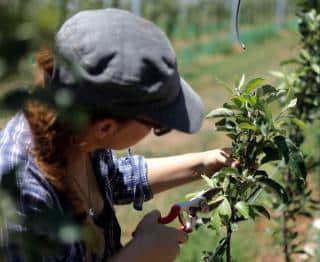

Fruit inducing pruning is an important step in the growth of your fruit tree and gives you control over its productivity.
Even though it isn’t compulsory, this pruning is recommended when you wish to increase productivity.
See also our quick video tips:
The best time to perform it is at the heart of winter, as long as it doesn’t freeze.
For apple trees, pear trees, peach trees and apricot trees, it is best to prune before spring growth, sometime in February.
This pruning must of course only be performed on older, well-shaped trees, and not on young specimens.
It must already have a rather strong structure.
 Start with removing dead branches, those that cross over each other, and wounded or broken branches.
Start with removing dead branches, those that cross over each other, and wounded or broken branches.Read also:
Once this work has been prepared, apply pruning paste on the open wounds of the larger branches.
It isn’t mandatory, but it is recommended to avoid any risk of disease!